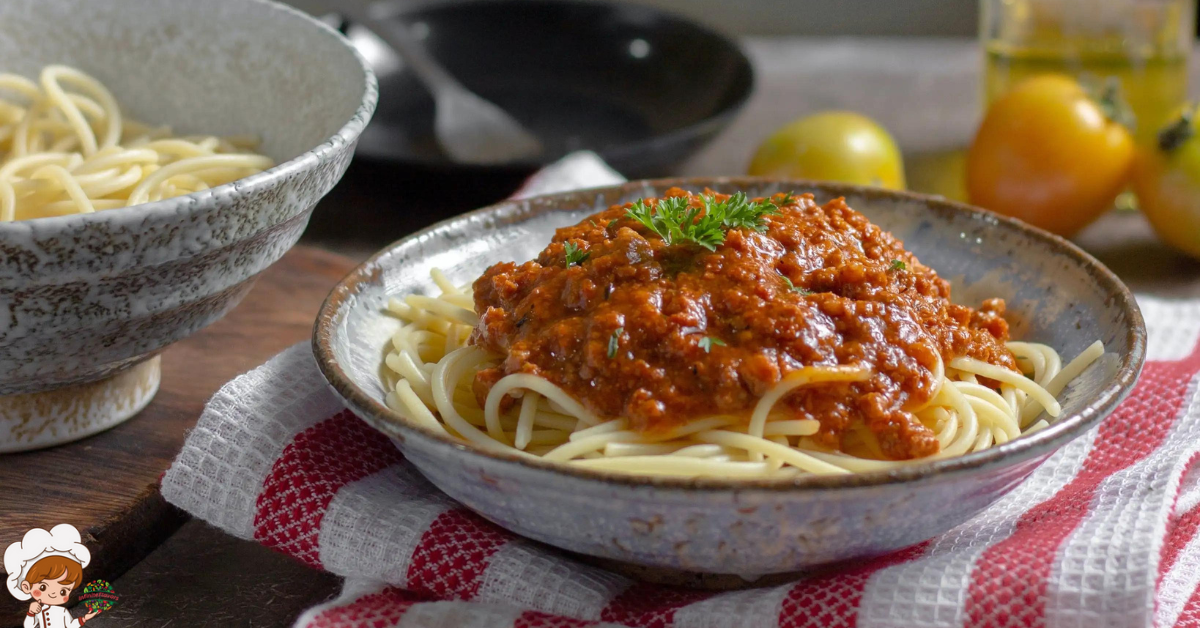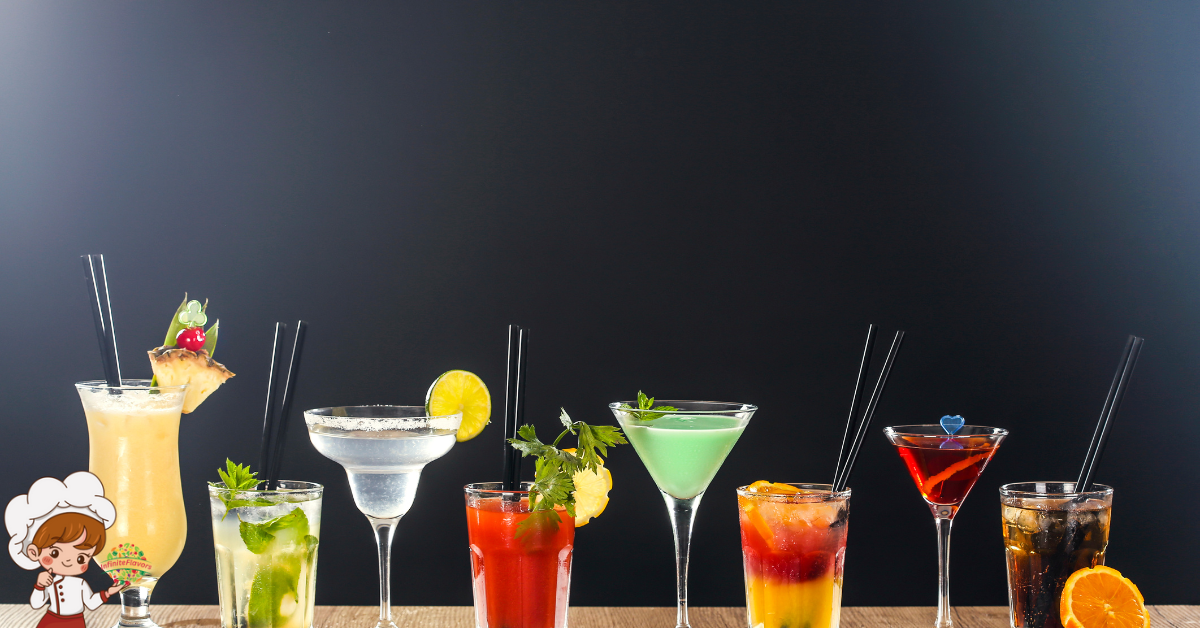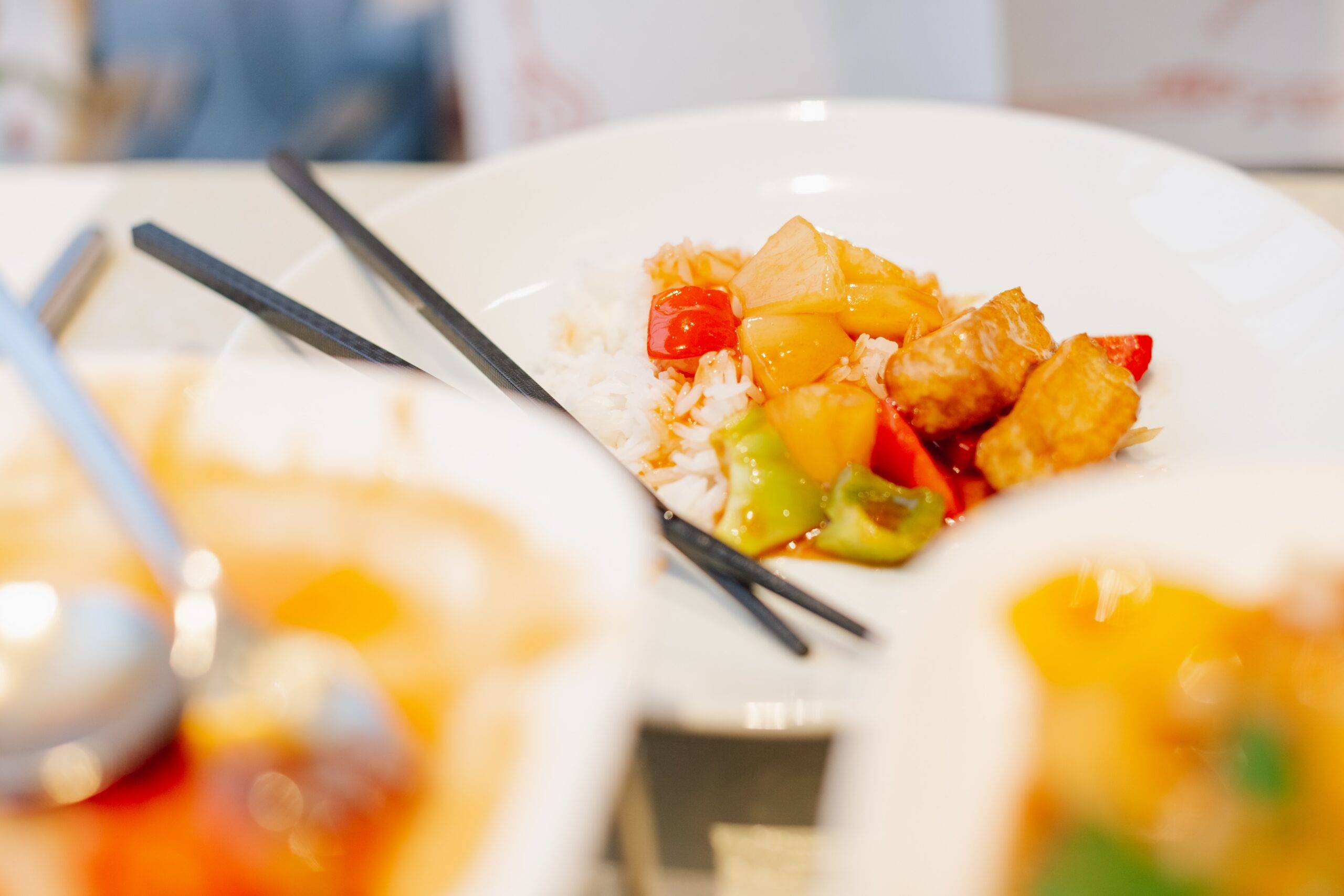The Exciting Cozy Origin of Pumpkin and Pecan Pancakes
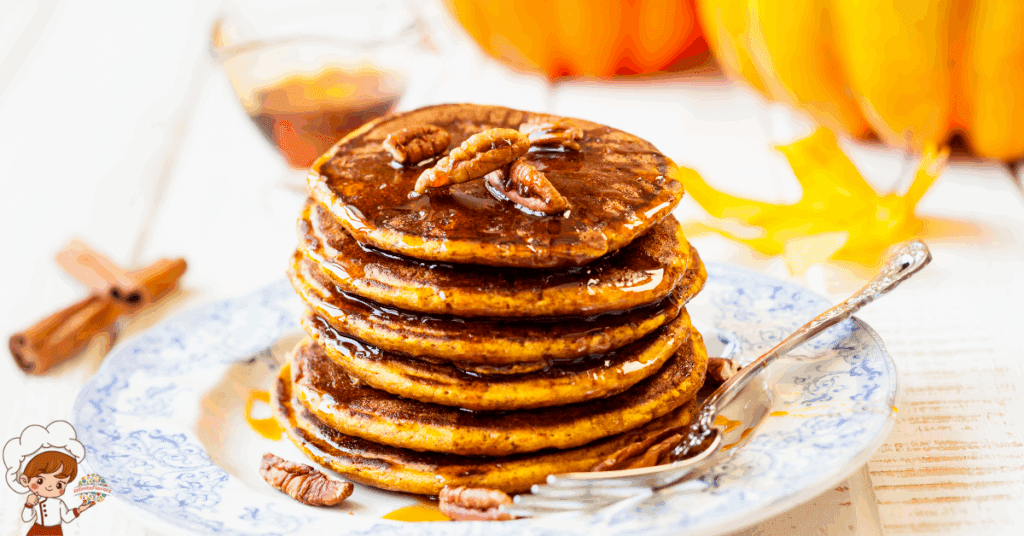
Cozy Origin of Pumpkin and Pecan Pancakes; Pumpkin and pecan pancakes evoke a sense of warmth, nostalgia, and seasonal celebration. With their rich autumnal flavors and soul-soothing aroma, these pancakes have become a beloved comfort food across the United States and beyond. But their origins are far more layered than simply combining two beloved ingredients into a breakfast dish.
The story of pumpkin and pecan pancakes weaves together indigenous food traditions, colonial history, regional Southern cooking, and the evolution of breakfast culture in America. As the popularity of seasonal recipes has grown in recent years, pumpkin and pecan pancakes have taken their place at the forefront of fall culinary traditions. This blog explores the cultural journey of these pancakes, how they became so iconic, and why they remain a seasonal favorite in kitchens and cafés everywhere.
Indigenous Roots of Pumpkin and Cornmeal Pancakes
The roots of pumpkin in North American cuisine can be traced back thousands of years to the Native American tribes who cultivated and cooked with this versatile squash long before the arrival of European settlers. Pumpkin was a staple crop for indigenous communities across what is now the United States and Mexico. Often roasted, boiled, or dried for storage, pumpkin was a key ingredient in both savory and sweet dishes.
Among its many culinary uses, Native Americans created early versions of pancakes using a mixture of pumpkin pulp and cornmeal, cooked on hot stones or griddles. These preparations were far from the fluffy, syrup-drenched pancakes of today, but they laid the groundwork for a centuries-long relationship between pumpkin and griddle cakes.
As European settlers arrived, they quickly adopted indigenous agricultural practices and ingredients. Colonists were introduced to “the three sisters” of Native American farming—corn, beans, and squash—which included pumpkin. They learned to cook and preserve pumpkin by baking it in ashes, stewing it into soups, or combining it with grains to form flat cakes. These early adaptations of pumpkin in English and Dutch kitchens became a foundational part of colonial American cooking.
Pancakes in American Breakfast Culture
While pancakes themselves have existed in various forms for millennia, from Greek tagenites to French crêpes, American-style pancakes developed a unique identity in the 18th and 19th centuries. In colonial America, pancakes were often made with buckwheat or cornmeal and served with molasses or syrup. With the expansion of wheat milling and the invention of baking powder in the 19th century, pancakes became fluffier and quicker to prepare, leading to their widespread popularity.
By the early 20th century, pancakes had become a quintessential part of the American breakfast table. The invention of pre-mixed pancake batters, such as Aunt Jemima in 1889, revolutionized home cooking and made it easier for families to prepare pancakes on weekday mornings. Restaurants and diners also capitalized on the growing love for pancakes, offering short stacks, silver dollar versions, and a wide range of flavors. Yet it wasn’t until the American palate grew increasingly adventurous—and increasingly seasonal—that the combination of pumpkin and pecans became a celebrated breakfast trend.
The Rise of Pumpkin Flavor as a Seasonal Staple
The widespread popularity of pumpkin flavor in the United States is a relatively modern phenomenon, even though pumpkin pie has long been a traditional staple of Thanksgiving tables. The mid-to-late 20th century saw a gradual rise in pumpkin-flavored foods and beverages, but it wasn’t until the early 2000s that pumpkin spice as a brand identity truly exploded.
With the launch of the Pumpkin Spice Latte by Starbucks in 2003, consumer demand for pumpkin-flavored treats surged. The drink’s success helped redefine pumpkin as more than a pie filling—it became a flavor experience that marked the beginning of fall. Food manufacturers followed suit, releasing pumpkin muffins, pumpkin granola, pumpkin cookies, and yes, pumpkin pancakes. What had once been a niche fall offering became a marketing juggernaut, with brands pushing pumpkin-themed products earlier each year.
Pumpkin pancakes became particularly popular during this seasonal shift because they offered a cozy, homemade feel that fit perfectly with autumn vibes. Whether enjoyed at home or in a bustling brunch café, pumpkin pancakes represented warmth, family, and seasonal celebration. As their popularity grew, variations emerged—including the addition of toasted pecans.
The Southern Influence of Pecans in Breakfast Cooking
To understand the pecan’s journey into pancakes, one must look to the culinary traditions of the American South. Native to North America, the pecan tree is indigenous to river valleys in what are now Texas, Louisiana, and parts of Mexico. The word “pecan” itself comes from the Algonquin word “pakani,” meaning a nut requiring a stone to crack.
Southern cooking has long embraced pecans in both sweet and savory dishes, from pecan pie and pralines to crusted chicken and salad toppings. Pecans were considered a luxury ingredient in early American cooking and eventually became a symbol of hospitality and Southern pride.
As pancake recipes evolved, Southern cooks began adding regional twists—including nuts, fruits, and spices—to traditional batters. The addition of pecans brought a buttery crunch and subtle nuttiness that elevated the humble pancake into something more indulgent. Paired with pumpkin, a natural autumnal companion, the flavor profile of the dish became even richer and more satisfying.
The Fusion of Pumpkin and Pecan in Modern Breakfast Culture
The first pumpkin and pecan pancake recipes likely emerged from community cookbooks, holiday brunch menus, and food festivals in the late 20th century. Combining the natural sweetness of pumpkin with the earthy crunch of pecans created a balanced and satisfying dish that was both comforting and celebratory. These pancakes found a home on seasonal menus in diners, cafés, and chain restaurants—offering a warm and flavorful alternative to traditional buttermilk or blueberry pancakes.
In the 2010s, food bloggers and home cooks helped push the popularity of pumpkin pecan pancakes even further. With the rise of food photography on Instagram and Pinterest, the golden-orange hues of pumpkin pancakes topped with maple syrup, whipped cream, or candied pecans became visually irresistible. Recipes often included spices like cinnamon, nutmeg, and clove, creating a pumpkin pie flavor in pancake form. Whether stacked high for a holiday breakfast or cooked in silver dollar sizes for kids, these pancakes became a seasonal staple for families and food lovers alike.
Health-conscious variations also contributed to the trend’s longevity. Recipes emerged using whole wheat flour, almond milk, or flaxseed to appeal to modern dietary preferences, while still maintaining the comforting flavors of fall. Vegan and gluten-free versions also gained traction, helping broaden the reach of pumpkin and pecan pancakes across dietary lifestyles.
Why Pumpkin and Pecan Pancakes Resonate
What makes pumpkin and pecan pancakes so special, and why have they earned a loyal following among seasonal food lovers? Part of the answer lies in their emotional resonance. Like many comfort foods, pumpkin and pecan pancakes evoke memories of holiday gatherings, crisp autumn mornings, and time spent with loved ones. They offer more than just a satisfying breakfast—they create a sense of ritual and celebration.
Their appeal is also rooted in balance. Pumpkin adds moisture, earthiness, and natural sweetness to the batter, while pecans add texture and depth. The spices that accompany the batter—typically cinnamon, nutmeg, and cloves—offer warmth and complexity. Together, the flavors harmonize into a dish that feels indulgent but familiar, festive yet accessible.
From a culinary standpoint, pumpkin and pecan pancakes also reflect the larger trend of seasonal eating and locally sourced ingredients. The dish pays homage to regional traditions and native crops while embracing a modern love of experimentation and creativity.
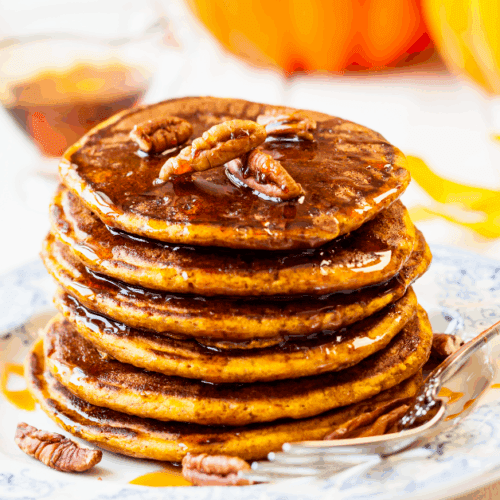
Pumpkin Pecan Pancakes
Ingredients
- Dry Ingredients:
- 1 ½ cups all-purpose flour
- 2 tablespoons brown sugar
- 2 teaspoons baking powder
- ½ teaspoon baking soda
- ½ teaspoon salt
- 1 teaspoon ground cinnamon
- ½ teaspoon ground nutmeg
- ¼ teaspoon ground ginger
- ¼ teaspoon ground cloves optional for extra spice
- Wet Ingredients:
- 1 cup milk dairy or your favorite non-dairy alternative
- ¾ cup canned pumpkin puree not pumpkin pie filling
- 2 large eggs
- 2 tablespoons melted butter or oil
- 1 teaspoon vanilla extract
- Mix-ins & Toppings:
- ½ cup chopped pecans plus extra for serving
- Butter maple syrup, and whipped cream for serving
Instructions
- Toast the Pecans (Optional but Recommended)
- If you’d like to deepen the flavor of the pecans, start by toasting them. Place chopped pecans in a dry skillet over medium heat and stir frequently for 3–5 minutes until fragrant and lightly browned. Set aside to cool.
- Mix the Dry Ingredients
- In a large mixing bowl, whisk together the flour, brown sugar, baking powder, baking soda, salt, cinnamon, nutmeg, ginger, and cloves. Make sure all the spices are well distributed throughout the flour mixture.
- Combine the Wet Ingredients
- In a separate bowl, whisk together the milk, pumpkin puree, eggs, melted butter, and vanilla extract until smooth and well blended.
- Bring the Batter Together
- Pour the wet ingredients into the dry ingredients and stir gently until just combined. Be careful not to overmix—some small lumps are perfectly fine and will lead to fluffier pancakes. Fold in the chopped pecans.
- Preheat and Grease the Griddle
- Heat a griddle or large nonstick skillet over medium heat. Lightly grease with butter or oil. To test the heat, sprinkle a few drops of water on the surface; they should sizzle and evaporate.
- Cook the Pancakes
- Scoop about ¼ cup of batter for each pancake onto the hot griddle. Spread slightly into rounds if needed. Cook for 2–3 minutes or until bubbles begin to form on the surface and the edges look set. Flip and cook the other side for another 2 minutes until golden brown and cooked through.
- Serve and Enjoy
- Serve warm pancakes stacked high, topped with a pat of butter, a drizzle of maple syrup, and a generous sprinkle of chopped pecans. For an extra indulgent touch, add whipped cream or a dash of cinnamon sugar.
Frequently Asked Questions: Cozy Origin of Pumpkin and Pecan Pancakes
Why are pumpkin and pecan pancakes considered a seasonal dish?
Pumpkin and pecan pancakes are most often associated with fall because both pumpkin and pecans are harvested in late summer through autumn. Additionally, the spices typically used in these pancakes—like cinnamon and nutmeg—are closely tied to fall baking and holiday traditions. The flavors evoke cozy, cool-weather comfort and are often featured in autumn-themed menus and food promotions.
Can pumpkin and pecan pancakes be made year-round?
Absolutely. While traditionally seen as a seasonal dish, pumpkin puree is available canned year-round, and pecans are widely accessible as well. Many people enjoy these pancakes beyond the fall months, especially for holiday breakfasts or as a way to bring a little taste of autumn to other seasons.
Are there regional variations of pumpkin and pecan pancakes?
Yes, regional variations exist depending on local tastes and ingredients. In the South, for example, these pancakes may be served with bourbon maple syrup or candied pecans. In the Midwest, they might be paired with apple butter or whipped cream. Some versions also incorporate oats, cornmeal, or buttermilk to add unique texture and flavor.
What is the best topping for pumpkin and pecan pancakes?
While traditional maple syrup is a favorite, many enjoy topping pumpkin and pecan pancakes with spiced whipped cream, caramel sauce, toasted pecans, or even a dusting of powdered sugar. Some recipes also suggest adding a pat of cinnamon butter or a drizzle of honey for added flavor.
Are pumpkin and pecan pancakes considered healthy?
Pumpkin is rich in fiber, beta-carotene, and vitamins A and C, making it a nutrient-dense addition to pancake batter. Pecans provide healthy fats, protein, and antioxidants. While traditional pancake recipes can be high in sugar and carbs, healthier versions using whole grains, natural sweeteners, and dairy alternatives can make pumpkin and pecan pancakes a nourishing choice.
How can I make them vegan or gluten-free?
Vegan versions typically use plant-based milk and egg substitutes like flaxseed meal or applesauce. For gluten-free pancakes, flour blends made from almond, oat, or rice flour work well. The flavor and texture can still be excellent with these adaptations, making the dish accessible to a wider range of dietary needs.
Conclusion: A Flavor That Feels Like Home
Pumpkin and pecan pancakes are more than just a breakfast dish—they are a reflection of culinary heritage, seasonal nostalgia, and the power of food to connect us to tradition and comfort. From their indigenous roots to their rise in modern breakfast culture, these pancakes tell a story of regional flavor, family ritual, and creative adaptation.
As the seasons turn and the leaves begin to fall, pumpkin and pecan pancakes emerge like a warm hug on a cool morning. They invite us to slow down, gather around the table, and savor the moment. Whether enjoyed during a festive holiday brunch or as a weekend indulgence, they carry with them the richness of the past and the flavors of the present.
In a world that constantly races forward, the ritual of making pumpkin and pecan pancakes reminds us that sometimes, the best flavors come from honoring tradition, embracing the season, and sharing something sweet with the ones we love.





